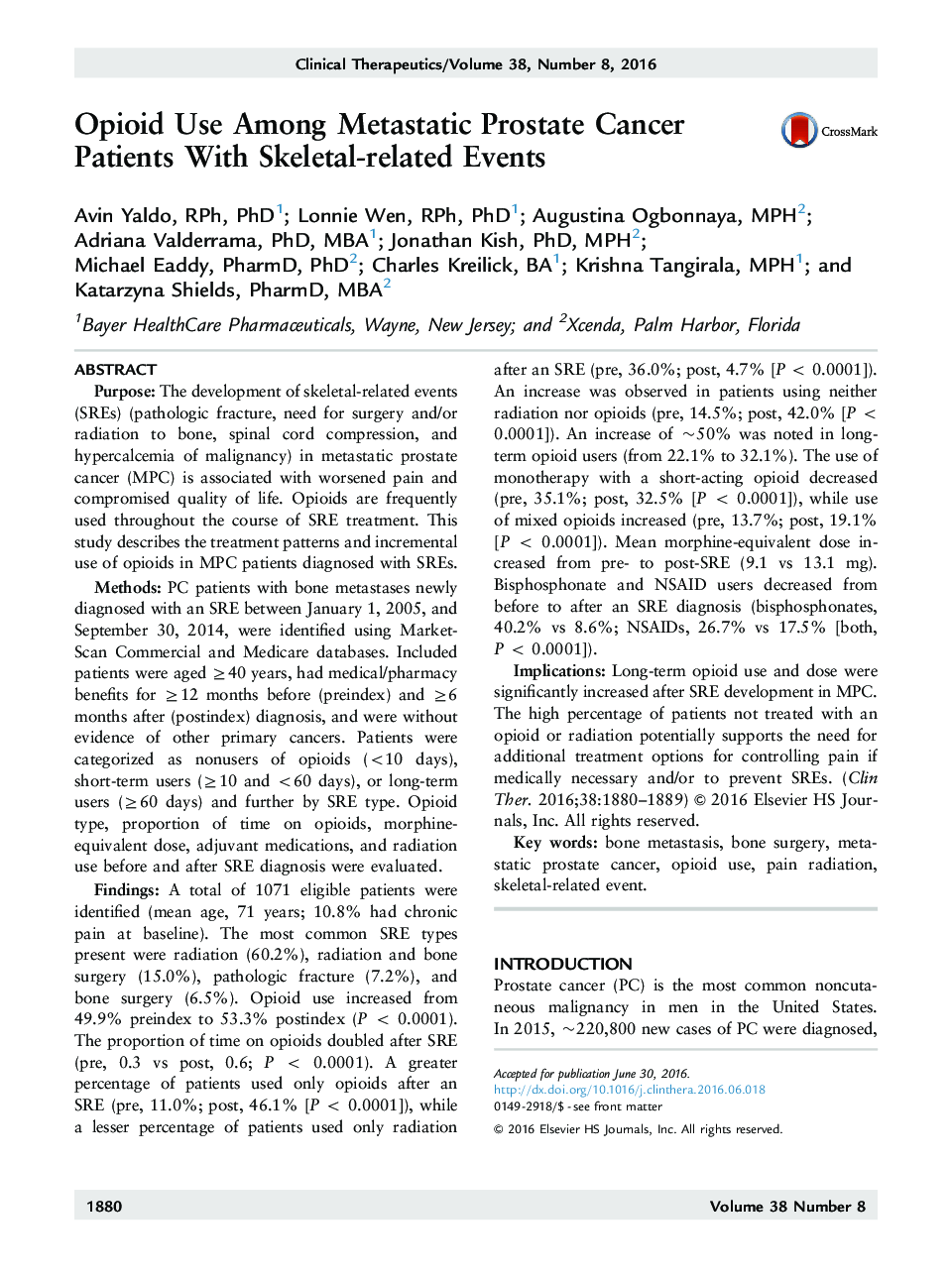| کد مقاله | کد نشریه | سال انتشار | مقاله انگلیسی | نسخه تمام متن |
|---|---|---|---|---|
| 5553841 | 1403017 | 2016 | 10 صفحه PDF | دانلود رایگان |
PurposeThe development of skeletal-related events (SREs) (pathologic fracture, need for surgery and/or radiation to bone, spinal cord compression, and hypercalcemia of malignancy) in metastatic prostate cancer (MPC) is associated with worsened pain and compromised quality of life. Opioids are frequently used throughout the course of SRE treatment. This study describes the treatment patterns and incremental use of opioids in MPC patients diagnosed with SREs.MethodsPC patients with bone metastases newly diagnosed with an SRE between January 1, 2005, and September 30, 2014, were identified using MarketScan Commercial and Medicare databases. Included patients were aged â¥40 years, had medical/pharmacy benefits for â¥12 months before (preindex) and â¥6 months after (postindex) diagnosis, and were without evidence of other primary cancers. Patients were categorized as nonusers of opioids (<10 days), short-term users (â¥10 and <60 days), or long-term users (â¥60 days) and further by SRE type. Opioid type, proportion of time on opioids, morphine-equivalent dose, adjuvant medications, and radiation use before and after SRE diagnosis were evaluated.FindingsA total of 1071 eligible patients were identified (mean age, 71 years; 10.8% had chronic pain at baseline). The most common SRE types present were radiation (60.2%), radiation and bone surgery (15.0%), pathologic fracture (7.2%), and bone surgery (6.5%). Opioid use increased from 49.9% preindex to 53.3% postindex (P < 0.0001). The proportion of time on opioids doubled after SRE (pre, 0.3 vs post, 0.6; P < 0.0001). A greater percentage of patients used only opioids after an SRE (pre, 11.0%; post, 46.1% [P < 0.0001]), while a lesser percentage of patients used only radiation after an SRE (pre, 36.0%; post, 4.7% [P < 0.0001]). An increase was observed in patients using neither radiation nor opioids (pre, 14.5%; post, 42.0% [P < 0.0001]). An increase of ~50% was noted in long-term opioid users (from 22.1% to 32.1%). The use of monotherapy with a short-acting opioid decreased (pre, 35.1%; post, 32.5% [P < 0.0001]), while use of mixed opioids increased (pre, 13.7%; post, 19.1% [P < 0.0001]). Mean morphine-equivalent dose increased from pre- to post-SRE (9.1 vs 13.1 mg). Bisphosphonate and NSAID users decreased from before to after an SRE diagnosis (bisphosphonates, 40.2% vs 8.6%; NSAIDs, 26.7% vs 17.5% [both, P < 0.0001]).ImplicationsLong-term opioid use and dose were significantly increased after SRE development in MPC. The high percentage of patients not treated with an opioid or radiation potentially supports the need for additional treatment options for controlling pain if medically necessary and/or to prevent SREs.
Journal: Clinical Therapeutics - Volume 38, Issue 8, August 2016, Pages 1880-1889
